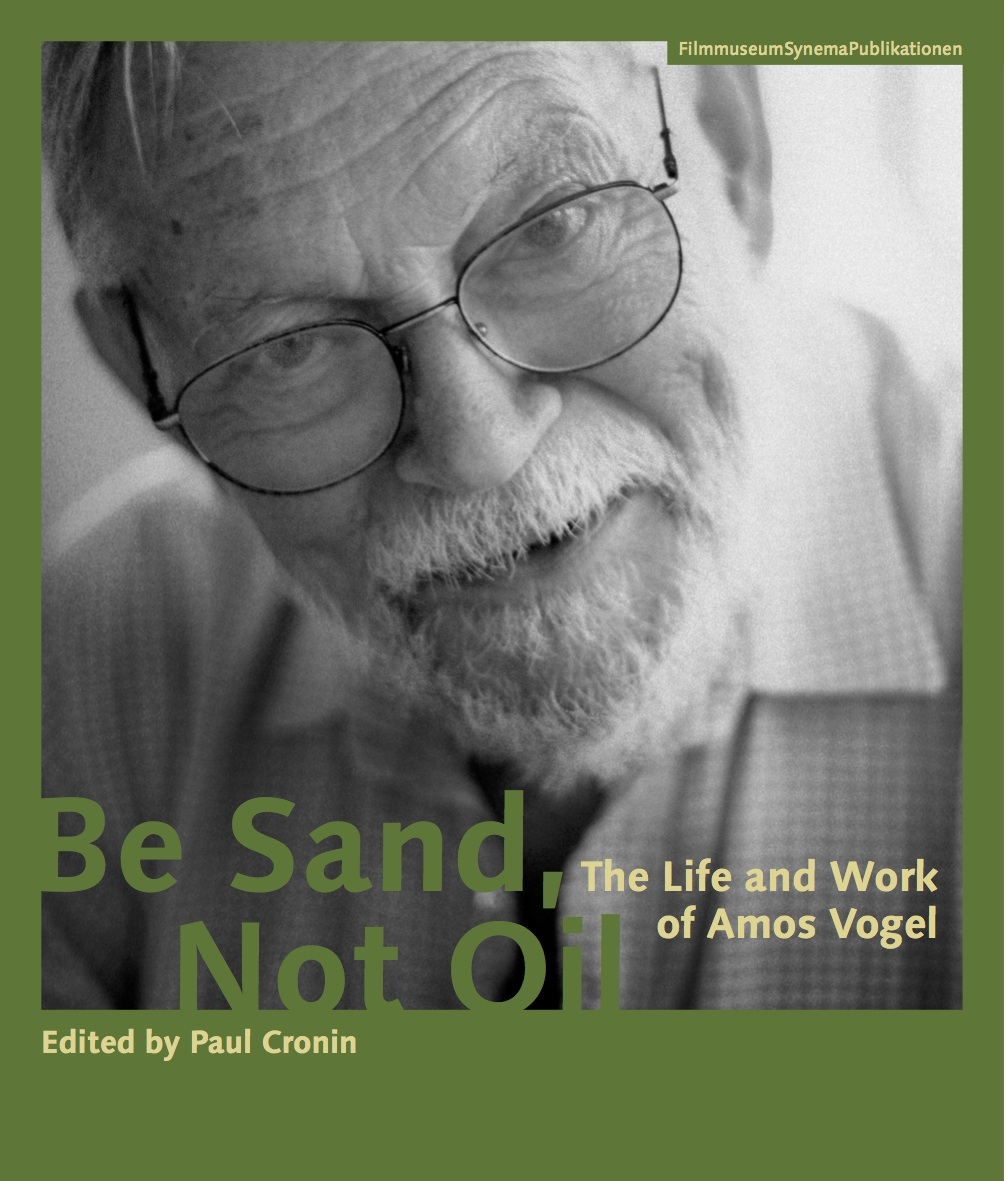Amos Vogel
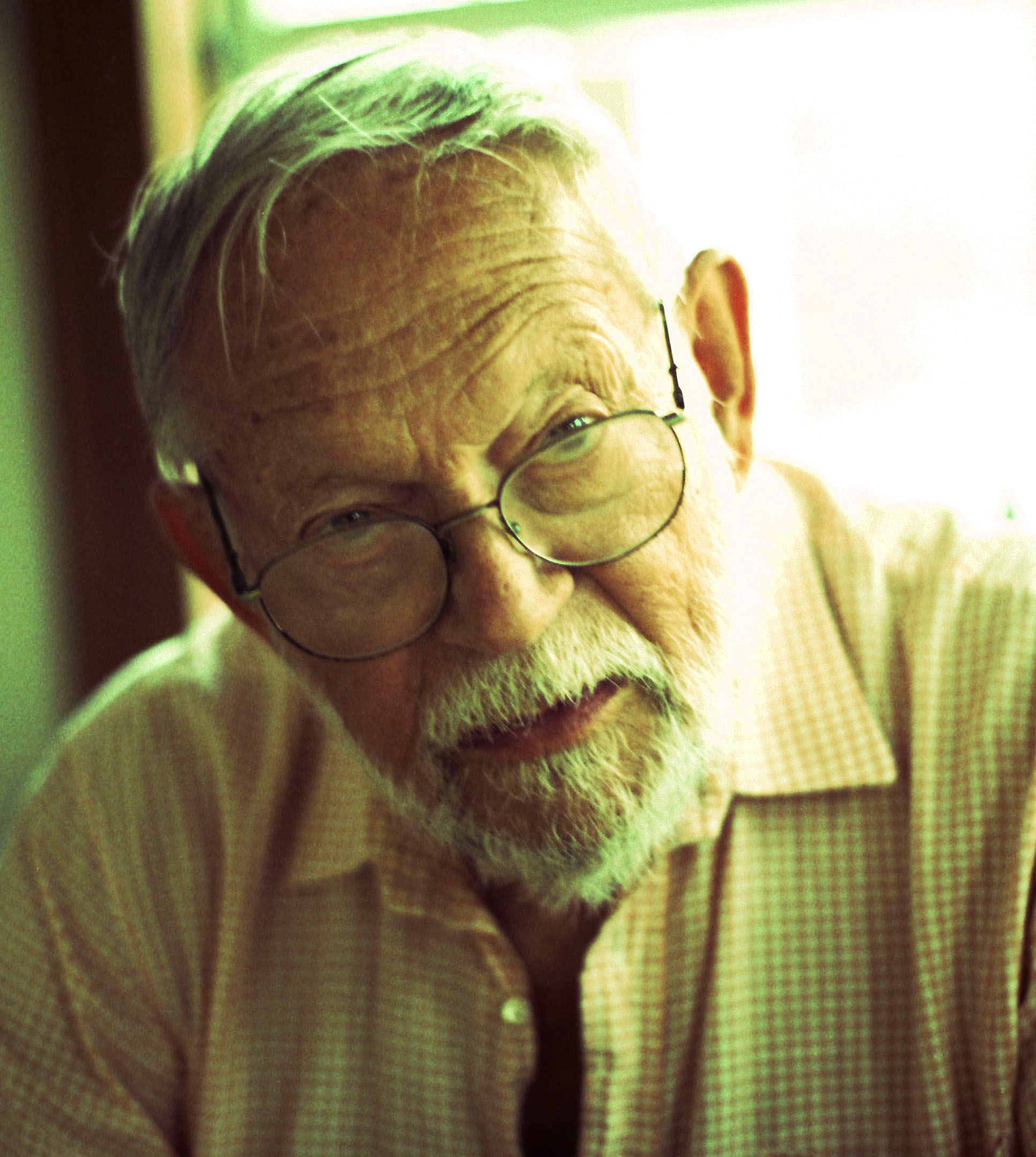 Film as a Subversive Art: Amos Vogel and Cinema 16 (2003) tells the story of Austrian-born historian, curator and all-round man of cinema Amos Vogel, who in 1947 established Cinema 16, America’s most important film club, and later the New York Film Festival, as well as publishing in 1974 one of the most legendary books on cinema ever, Film as a Subversive Art. When the film was screened at the Viennale in 2004, Vogel was the subject of a retrospective. Watch Film as a Subversive Art here and read the dialogue transcript here. A collection of audio/visual clips about Amos Vogel is here.
Film as a Subversive Art: Amos Vogel and Cinema 16 (2003) tells the story of Austrian-born historian, curator and all-round man of cinema Amos Vogel, who in 1947 established Cinema 16, America’s most important film club, and later the New York Film Festival, as well as publishing in 1974 one of the most legendary books on cinema ever, Film as a Subversive Art. When the film was screened at the Viennale in 2004, Vogel was the subject of a retrospective. Watch Film as a Subversive Art here and read the dialogue transcript here. A collection of audio/visual clips about Amos Vogel is here.
Be Sand, Not Oil: The Life and Work of Amos Vogel (2014), edited by Paul Cronin and with a foreword by Werner Herzog, collects together writings by and about Vogel, including previously unpublished work and essays by scholars about his time as a curator and teacher. Here for the table of contents.
We are, as a race, aware of certain dangers that surround us. We comprehend
that global warming and overcrowding of the planet are real dangers for mankind.
We have come to understand that the destruction of the environment is another
enormous danger, that resources are being wasted at an extraordinary rate.
But I believe that the lack of adequate imagery is a danger of the same magnitude.
Werner Herzog
Amos Vogel’s contribution to our understanding of cinematic art is incalculable. Upon his death, The New York Times suggested that he “exerted an influence on the history of film that few other non-filmmakers can claim.” His ideas, which furnish us with the tools needed to filter the torrent of moving images that have exercised an increasingly fierce and hypnotic hold on humankind, are today as potent and relevant – probably even more so – as they were sixty years ago, when Vogel emerged as one of America’s most respected curators and distributors of alternative, non-mainstream world cinema. “If under present conditions we cannot stop the ruthless expansion of mass-culture,” wrote Partisan Review co-founder Philip Rahv in 1952, “the least we can do is keep apart and refuse its favors.” Such was Vogel’s modus operandi for a half century, throughout which he continually pushed against what Adorno and Horkheimer confidently described as “propaganda” and devised innovative methods of examining and disseminating the kind of cinema that was fresh to the public eye and contrarian to the dominating ethos.
Born in Austria in 1921, Vogel lived in the Unted States from 1939 until his death in 2012. In 1947 he created Cinema 16, a pioneering film club aimed at audiences thirsty for work “that cannot be seen elsewhere,” and in 1963 was instrumental in establishing the New York Film Festival. He later embarked on an ambitious teaching career, during which he synthesized decades of experience and oriented his beliefs toward students and, eventually, the wider public. In 1974 he published the culmination of his thoughts – accompanied by an extraordinary assemblage of photographic stills – in Film as a Subversive Art, which exquisitely illustrates the notion Werner Herzog states above: that most of the images around us are worn out and pernicious in their banality. The book was lauded from all sides upon its release. Norman Mailer, an occasional experimental filmmaker himself, considered it “the most exciting and comprehensive book” he had read on “avant-garde, underground, and exceptional commercial film.” Variety, Hollywood’s bible, described it as “a serene peak” among the “stunted foothills” of writings about film.
Over several decades, Vogel encouraged what could be termed an explosion of interest in cinema. Pulling various strings in New York at a moment when for the first time film was being widely considered as more than mere “entertainment,” he assisted in steadily nurturing the city’s passionate, opinionated audiences and directing its cultural spotlight in the direction of new cinematic forms. The medium, Vogel joyously wrote in 1965, “has finally been discovered: its popularity with the cultural elite and the young enthusiasts is rapidly assuming the proportions of a cult.” Much invigorating work now on view made it demonstrably clear that film was exploring new realms and finally becoming, as he put it, both witness and catalyst. The cinema Vogel programmed, he explained, testified “to a stylistic, thematic, technological, ideological liberation of film from nineteenth-century art. Realistic narrative structures, clearly defined plots and characters are increasingly displaced by visual ambiguity, poetic complexity, restless improvisation; the editing is explosive, elliptic, unpredictable; camera movements are frequent, free, fluid; time and space are telescoped or destroyed; memory, reality and illusion are fused until, in a flash of frightful revelation, we realize that the totality of these uncertainties and discontinuities reflects nothing less than the modern worldview in philosophy (existentialism), physics (relativity, indeterminacy, quantum theory), psychology (the subconscious, myth, the dream world as a place). And so film finally breaks with its sordid provincialism and inevitably becomes affected by modern theater (Beckett, lonesco, Artaud, Brecht), new literature (Sarraute, Robbe-Grillet and the nouveau roman) and the contemporary plastic arts.”
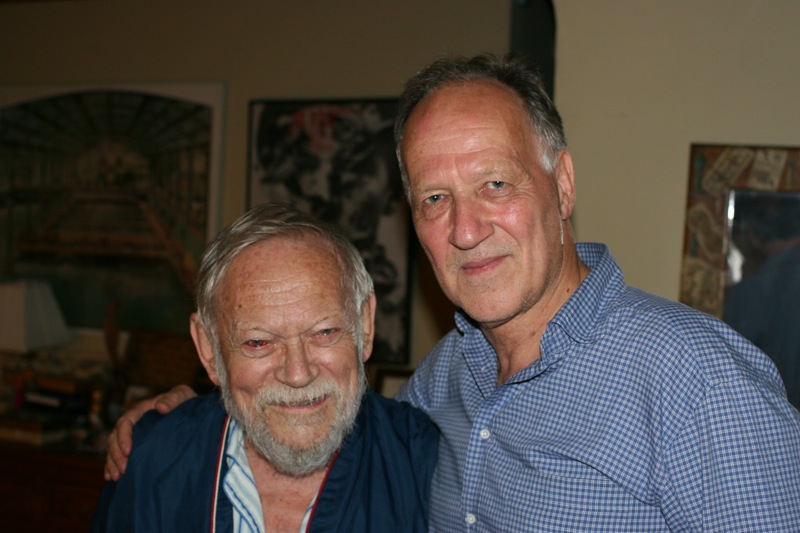
Vogel – whose interest in radical imagery was conjoined with a scathing critique of mainstream culture and the agents who create it – spent decades constructing and manning bulwarks against the ascendancy and overflow of frivolous and artless product, exploring instead enigmatic cinematic tendencies that had to be actively sought out. He invested his life in the promulgation of iconoclastic work that would otherwise be obscure, helping viewers absorb new patterns of representation, bringing the unknown to light. Vogel insisted that mass entertainment (encountered worldwide in similar, if not identical, forms) is never innocuous, always representative of the ideological and economic interests of those who indiscriminatingly bombard, distract, manipulate and impoverish the world with meretricious, trivializing, exploitative and counterfeit imagery. There is an unending urgency to resist its deadening effects because acquiescence and capitulation inexorably lead to something even more noxious and degraded. Self-defense through education – schooling in the effects of this steady and expansive saturation – therefore underpinned Vogel’s mission. He appealed for a constant widening of the public’s understanding and appreciation of film culture, for a reevaluation of norms and value systems as they derive from or are impacted by cinema, and for a careful consideration of the multidirectional trends of future filmmaking. In so doing he empowered audiences by encouraging the sharpening of senses, at the same time inspiring generations of scholars, historians, critics, curators and cinema enthusiasts to follow similar paths.
Amidst the backdrop of the languid, reactionary United States during its postwar years of what Mailer called “psychic havoc” (not least the precariousness of technological progress: he and Marcia, to whom he was married for more than sixty years, got hitched the day Hiroshima was bombed), Vogel’s sensibilities, by contrast, seem unbounded, his mindset unclouded, his calling clearly defined. In constant search of cinema with the potential to subvert “all existing forms of aesthetic expression,” Vogel disseminated and expounded upon acts of self-expression to as many people as possible, seeking to disrupt “the tranquility of the ordinary” and unsettle – even deform – our “existing mental framework.” While for Shelley poets are “the unacknowledged legislators of the world,” the significant filmmakers are, for Vogel, “the most nakedly sensitive antennae toward our collective secrets.” Moreover, he advised, many such image-makers feel profoundly alienated from society, so need succor and encouragement from the community within which they work, no matter how upsetting the fruits of their labor.
Everywhere he looked, Vogel saw films that challenged the status quo, expanded conceptual horizons, antagonized the homogenizing influences of the establishment, extended our understanding of storytelling, of art, of the world. This is the kind of counter-hegemonic cinema he counted on shocking spectators into recognition of fundamental truths. Vogel’s cinema presents audiences “imploringly with flares in the night, reflections of terror, symbols of limited hope, allegories of inevitable corruption, warnings of holocaust, and intimations of possible love.” It is a wholesale act of revolt against “the ossifications of institutions and the conservatism of the old,” against product that appeals to the lowest common denominator. He hunted for unpredictable work that “treads on toes,” replaces long-established and overworked structures, established procedures, sacred cows and textbook traditions with “poetic complexity,” “improvisation” and “personal revelations.” Such cinema fortifies by forcing viewers to open wide their eyes, “thereby rendering them defenseless against the magic powers of the medium.”
The work Vogel championed from his hallowed New York, the heart of the consumerist world, was also intensely subjective, representative of the creative minds behind it. These films often dealt defiantly and resolutely with the tumultuous social changes taking place in American society at the time – an era he described as being full of “disorientation, collective anxiety and individual alienation” – yet addressed them obliquely, thus regularly leading to incomprehension by the general public. No matter. It is, Vogel suggested, a tribute to an artist’s mastery that their esoteric art creates such confusion. “You don’t like it?” he would ask irate ticket holders as they stormed out of a Cinema 16 screening. “We’ll play it again.”
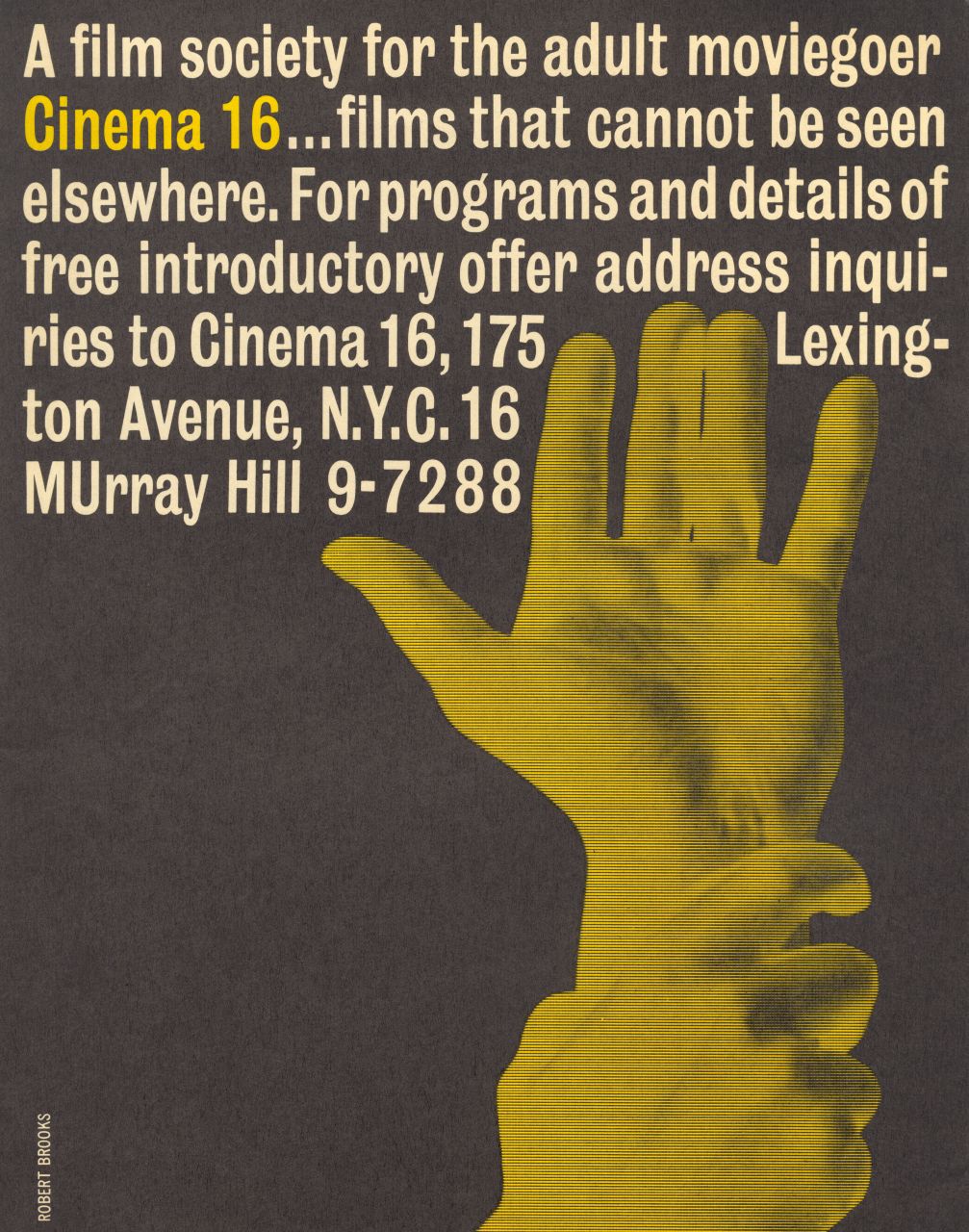 Vogel was certain about the kind of cinema this wasn’t: constrained by bureaucracy, “enmeshed in commercial narrative codes,” designed for instant gratification and with the aim of generating as much revenue as possible, the kind foisted endlessly and at every turn upon the suspecting public. (“I have never in my life worked on projects that turn a profit,” he announced unapologetically and with a touch of pride.) Vogel railed against these films – complicit in the “vulgarizations of the mass media” – because they over-simplified and lulled audiences into lethargy. In a 1961 Village Voice article, where he writes about the conversation between Nikita Khrushchev and Soviet cosmonaut Gherman Titov (the second human to orbit the planet), the villain of the piece is the unscrupulous world of commercial cinema that sucks in and swallows up willing audiences. These viewers, Vogel regrets, have become little more than mechanized consumers who have slipped into the role of efficient cogs in “a mindless, inhuman system.” Khrushchev/Hollywood is the hypnotist, working a spell over the masses which succumb to the vivid charms on offer and, by paying handsomely for the privilege of being duped, take refuge in the mediocre. (Even at the time, of course, this malaise was ubiquitous. In 1951, Marshall McLuhan declared Time magazine full of “predigested pap,” explaining that its publisher, Henry Luce, exercised considerable political control over the American public through “mass hypnosis” and that his readership was a “mindless, helpless, entranced audience.”)
Vogel was certain about the kind of cinema this wasn’t: constrained by bureaucracy, “enmeshed in commercial narrative codes,” designed for instant gratification and with the aim of generating as much revenue as possible, the kind foisted endlessly and at every turn upon the suspecting public. (“I have never in my life worked on projects that turn a profit,” he announced unapologetically and with a touch of pride.) Vogel railed against these films – complicit in the “vulgarizations of the mass media” – because they over-simplified and lulled audiences into lethargy. In a 1961 Village Voice article, where he writes about the conversation between Nikita Khrushchev and Soviet cosmonaut Gherman Titov (the second human to orbit the planet), the villain of the piece is the unscrupulous world of commercial cinema that sucks in and swallows up willing audiences. These viewers, Vogel regrets, have become little more than mechanized consumers who have slipped into the role of efficient cogs in “a mindless, inhuman system.” Khrushchev/Hollywood is the hypnotist, working a spell over the masses which succumb to the vivid charms on offer and, by paying handsomely for the privilege of being duped, take refuge in the mediocre. (Even at the time, of course, this malaise was ubiquitous. In 1951, Marshall McLuhan declared Time magazine full of “predigested pap,” explaining that its publisher, Henry Luce, exercised considerable political control over the American public through “mass hypnosis” and that his readership was a “mindless, helpless, entranced audience.”)
Vogel wanted audiences to be changed, even regenerated, by the films they watched. Novelty was vital. “Blind adulation, hermeticism,” he explained, “are the enemies of growth and lead to the repetition of what has already been achieved.” At its best, cinema is revelation, not a commodity. The notion of a passive spectator was anathema to Vogel. Looking was never enough. Action had to be taken, and was most effective when done with others, at a localized meeting place where communal learning could take place. In 1965 he wrote an article for The New York Times that expressed enthusiasm for the many loyal viewers who had flocked to the previous two seasons of the New York Film Festival: “It is not a Times Square film audience; it does not hanker after bikini-clad starlets; it fails to be excited by the ordinary. Instead, passionate, opinionated and vociferous, it testifies at the Festival to its commitments by applause, hisses and unswerving presence.”
Boldly autonomous and exploding with unorthodoxies, Vogel raged against censorship of any kind and in 1963, along with his friend Maurice Sendak, produced one of the most subversive children’s books ever published, How Little Lori Visited Times Square. (Its hero – a young boy – goes missing, seemingly devoured by New York City, presumably never to be seen again.) He preferred to shutter Cinema 16 rather than accept subsidies and the conditions that would inevitably accompany such financial support, and five years later walked away from the New York Film Festival because he felt his vision – and that of the Lincoln Center Film Department – was being recklessly compromised. Open-minded, principled, intellectually honest and adventurous, for Vogel there was little difference between screening films made by a host of unknown European directors to discerning New York audiences throughout the 1950s and, decades later, tentatively enthusing over the early years of MTV (he went to a Madonna concert at Madison Square Garden in 1993).
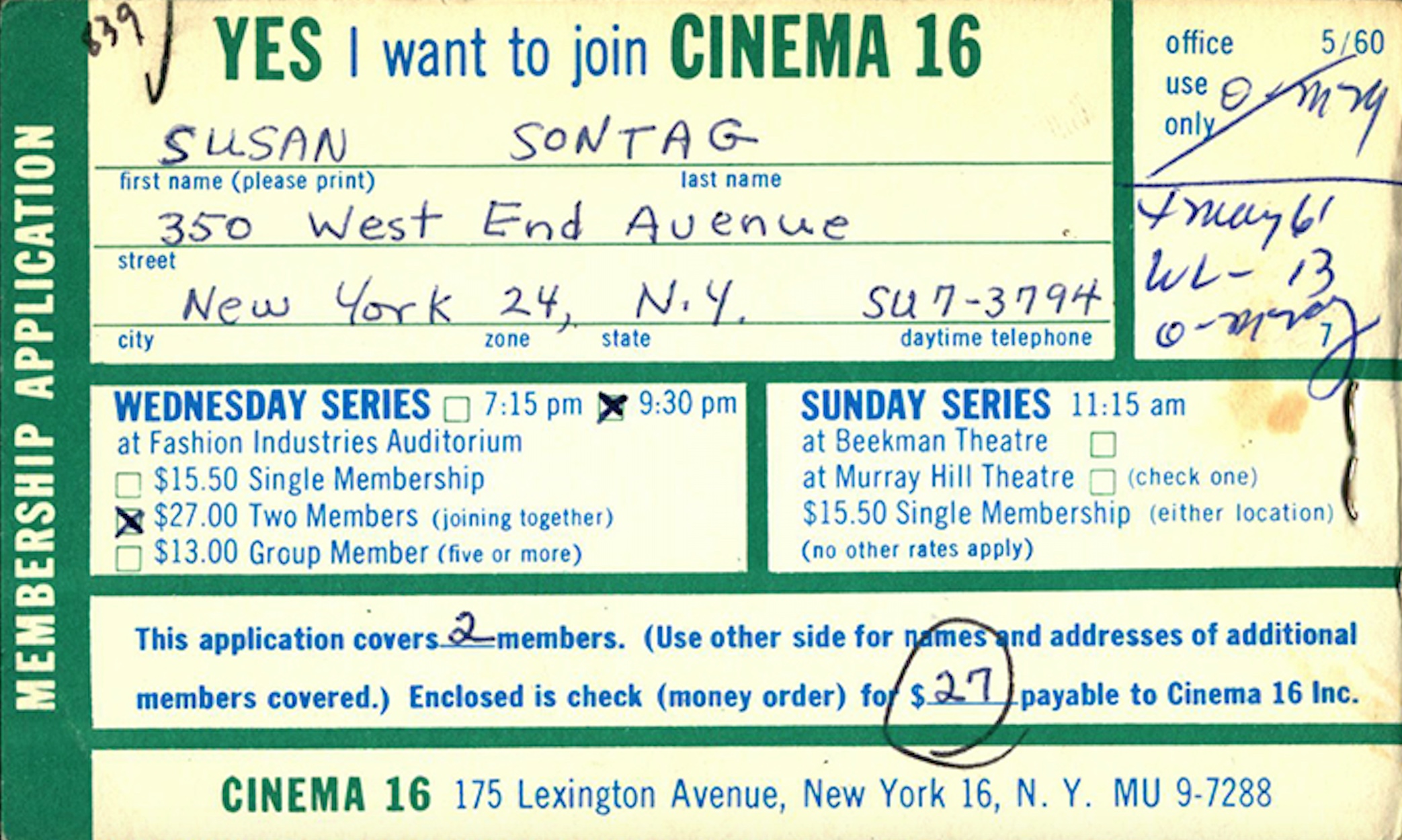
Vogel cast his net wide, always willing to take chances on the new and unfamiliar. It was an approach that made him an anti-auteurist, pushing against the idea of a cinematic pantheon, that every film by a significant director automatically had value. With an extraordinary eye for talent (look at the programming of the first few years of the New York Film Festival and see film after film that is today canonized), his life was spent hunting for work that “expresses a revolt against the ossifications of institutions and the conservatism of the old. It represents a cinema of passion.” A partial list would include animation, children’s cinema, political propaganda of all persuasions, social issue documentaries, surrealism, dance, slapstick comedy, newsreels, educational science films, nudity and explicit sex, structuralist experimentation, abstract and poetic art, anthropological studies, European classics, Hollywood blockbusters. At Cinema 16, the New York Film Festival, in Film as a Subversive Art and throughout Vogel’s classroom discussions, everything was embraced. “Nichts Menschliches ist mir fremd” (the German translation of Terence) – “Nothing human is alien to me” – was Vogel’s philosophy.
“To the extent that art can provide us with intimations of truth, personal freedom, epiphanies of human creativity, to the extent that it offers us weapons of fact and persuasion to fight injustice and inequality,” the avuncular Vogel wrote in 1993, “I remain committed, at age 72, as I have always been, and for the same reasons, to creative, non-commercial, radical film.” Do we have to fear for the loss of this kind of cinema? Might it ever be definitively deracinated and overcome by the mainstream? Not to worry. As Vogel told Scott MacDonald:
I must tell you that no matter what the present situation is, despite the social factors
that are operating against us and the narrowness of the existing showcases, I have a
very optimistic attitude. In my opinion, the avant-garde will never die; it cannot die.
There will always be people who want to go against whatever the current orthodoxies
are, who want to strike out in new directions and find new ways of expression. When
people ask me how I can be optimistic now about the possibilities for progressive
politics or for subversive art, I have a saying: “I have more confidence in my enemies
than I have in my friends.” I’m convinced that my enemies will continue to do the most
outrageously repressive things and therefore will again, inevitably, evoke a revolt on
the part of those who are being kept out or kept down artificially and by force. The
power of the artistic impulse that creates what we call the avant-garde cannot be
overcome; it will always rise again.
Writing in 1965, Vogel described his quest as being a simple, if arduous one: to provide “the mysterious satisfactions of art, the strange delight of truth parading as illusion, created within a white rectangular space by pure light and strips of celluloid.” Respectful of both science and the sacred, Vogel’s personal cosmology was a curious blend of materialist philosophy and mystical belief. A militant antitheist, he espoused imagery that was sometimes inscrutable and unfathomable, but always in the knowledge that honest engagement with the actuality underwriting human experience is a concrete and potential panacea for society. As a skeptic (in the Jewish tradition, from Maimonides and Spinoza to Karl Marx and Freud), he was at odds with the apparently self-evident truths espoused by many of his contemporaries on the Left. Vogel’s notion of revolution was rooted in the idea of the artist continuously superseding himself. Any triumph of subversion, of aesthetic innovation, will be immediately and creatively supplanted because – as explained in the final chapter of Film as a Subversive Art – the subversive (as expressed by the artist), at the moment of victory (as expounded upon by the social commentator), is already outdated. The dialectic advances. “Forever? Forever.” We look always into the future.
A version of this essay appears in Be Sand, Not Oil: The Life and Work of Amos Vogel.
